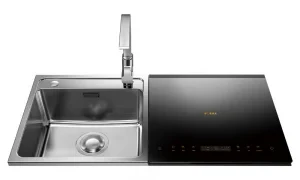Dental rubber dam placement is a technique used in dentistry to isolate the teeth being treated from the rest of the oral cavity. It involves the use of a thin sheet of latex or non-latex material called a dental dam, which is stretched over a frame and secured around the teeth using clamps or ligatures. The purpose of using a dental rubber dam is to create a dry and clean operating field, improve infection control, and enhance treatment outcomes.
Dental rubber dam placement offers several advantages in dental procedures:
1. Moisture Control: By isolating the teeth with a rubber dam, saliva and moisture are kept away from the treatment area, providing a dry and clean environment for the dentist to work in. This improves visibility and prevents contamination of dental materials.
2. Infection Control: Dental rubber dams act as a barrier between the treated teeth and the rest of the oral cavity, minimizing the risk of infection transmission. It prevents contact with oral fluids, bacteria, and other contaminants.
3. Patient Comfort: Using a dental rubber dam can enhance patient comfort by reducing gag reflexes and minimizing discomfort caused by water or debris during treatment. It also protects soft tissues from irritation or damage.
4. Improved Efficiency: With better visibility and control over the treatment area, dentists can work more efficiently and accurately. Rubber dams provide isolation for specific teeth or areas, allowing for focused treatment without interference from adjacent teeth.
Dental rubber dams are commonly used in various dental procedures such as restorative dentistry (fillings, crowns), endodontic treatments (root canals), and cosmetic procedures (veneers, bonding). They are particularly beneficial when moisture control is crucial for successful treatment outcomes.
To place a dental rubber dam, the following steps are typically followed:
1. Tooth Preparation: The tooth or teeth to be treated are cleaned and prepared for isolation.
2. Dental Dam Selection: A suitable size of dental dam is selected, considering the number of teeth to be isolated and the patient’s comfort.
3. Frame Placement: The dental dam is stretched over a frame or a clamp, ensuring it covers the entire treatment area.
4. Application: The dental dam is positioned over the teeth, with holes punched in the dam corresponding to the teeth being treated. It is secured using clamps or ligatures.
5. Dental Dam Removal: After the procedure is completed, the dental dam is carefully removed, ensuring all clamps or ligatures are released without causing any discomfort or damage.
Dental rubber dam placement requires proper training and technique to ensure its effective and comfortable use for both dentists and patients. It is an essential tool in modern dentistry that contributes to improved infection control, treatment outcomes, and patient satisfaction.
Top Dental Supply Companies offer a Wide Range of Services
Top dental supply companies offer a comprehensive range of services to dentists to support their practices and enhance patient care. Some of the key services provided by these companies include:
Product Sales: Dental supply companies offer a wide array of dental products, including consumables (such as gloves, masks, and dental materials), instruments, equipment (like chairs, x-ray machines, and sterilization units), and technology solutions (such as dental software and digital imaging systems).
Equipment Installation and Maintenance: Many dental supply companies provide installation services for equipment purchases, ensuring proper setup and integration into the dental practice. Additionally, they offer maintenance and repair services to keep equipment running smoothly and minimize downtime.
Continuing Education and Training: Top dental supply companies often host seminars, workshops, and online courses to provide dentists and their staff with continuing education opportunities. These educational programs cover topics ranging from clinical techniques to practice management and help dental professionals stay updated with the latest advancements in the field.
Practice Management Support: Dental supply companies may offer practice management software solutions that streamline administrative tasks, such as appointment scheduling, billing, and patient communication. These tools help dentists optimize workflow efficiency and improve the overall patient experience.
Technical Support and Customer Service: Dental supply companies provide technical support services to assist dentists with product inquiries, troubleshooting, and technical issues. They also offer responsive customer service to address any concerns or questions that dentists may have regarding their purchases or services.








































